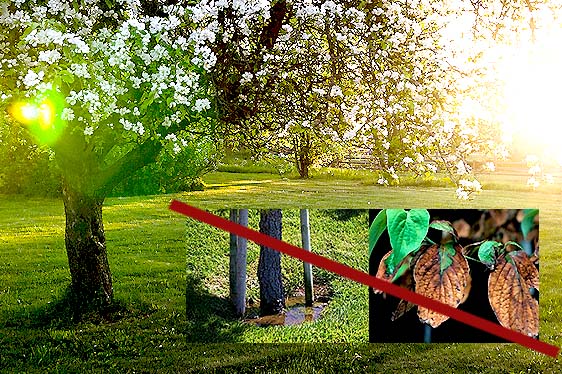
Spring is finally in the air—and with it, the perfect time to spend in outdoor spaces. We’re all ready to head out into the sun with the warmer weather. With this comes active monitoring of tree health, which includes knowing and understanding how to water trees properly. Trees can die from too little or too much water. It’s important to find what works best based on your yard’s soil, variety of plant species, and weather.
If you’ve been thinking of planting trees or providing extra “TLC” to your existing trees, you may have a few questions. How to best water trees, and how often should you water them? Let’s take a look at the best ways to water new or established trees.
How Watering Needs Change in Different Seasons
As the seasons change, so should our watering habits!
Spring: As your trees are getting ready to pump out new growth, it is vital to give them the water they need! Start watering your tree before it leafs out, don’t wait. Flushing your soil with water in the spring will also help remove any salt remaining from winter deicing salts.
Summer: Weather fluctuations in the summer can make watering tricky. The back and forth between smoldering temperatures and summer storms can stress your tree out. Check out our in-depth blog about helping your trees deal with drought and hurricane stress!
Fall: As your trees are getting prepared for the stress of winter, fall is a crucial time to make sure your trees are strong and prepared. Don’t forget to add mulch around your tree, which will help retain water as your trees approach dormancy.
Winter: It is a common misconception that you should not water trees in the winter. This isn’t always true. As long as the air temperature is above 40 degrees Fahrenheit, it is safe to water your tree. In our area, we tend to have milder winters, so you can use these warmer days to keep your tree protected from winter stress! Want more winter watering tips? Check out the full blog here!
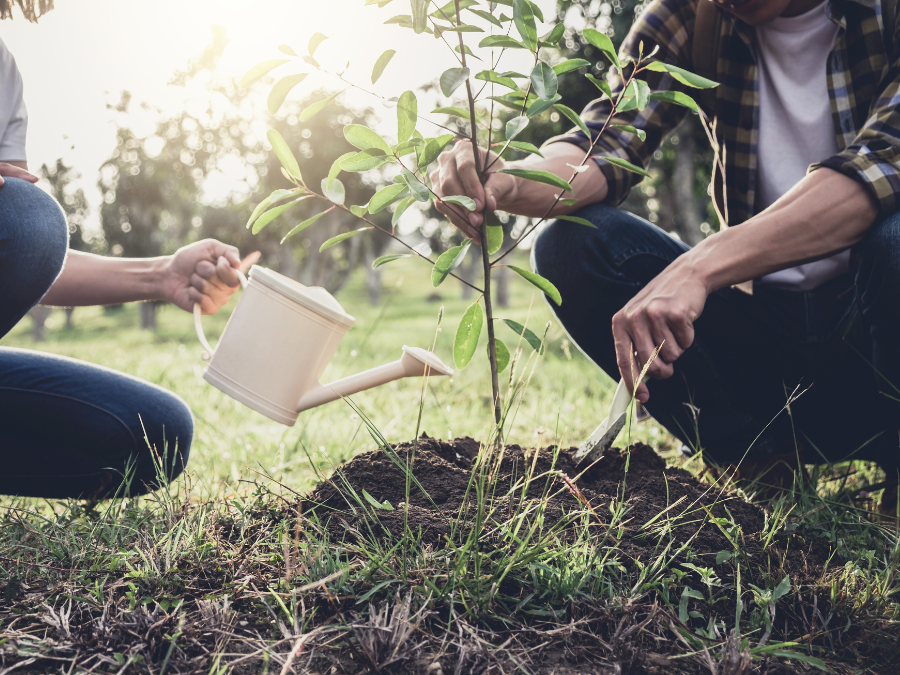
How to Water Trees Newly Established Trees
If you have a young tree, you’ll need to pay special attention to your watering habits. Ease the tree’s stress by waiting until the day after planting to water, and then deeply water the new tree.
What is a Newly Established Tree?
Depending on the type of tree and its age, it can take anywhere from one to two growing seasons for the tree to become established. This means that its roots have grown out of its initial root ball and deep into the nutrient-rich soil beyond. During these growing years, young trees need the right amount of water.
Of course, most homeowners ask: how much water does a young tree need, and how often?
Young trees generally need more watering than mature trees. The idea with younger trees is to water them less and less often as the root system gets established. In the first few years, you may need to water every one to two weeks.
In general, you’ll want to water a new garden tree thoroughly enough to soak the entire root ball. As for frequency, the amount varies by the type of tree, the soil, and the weather.
How to Water Mature Trees
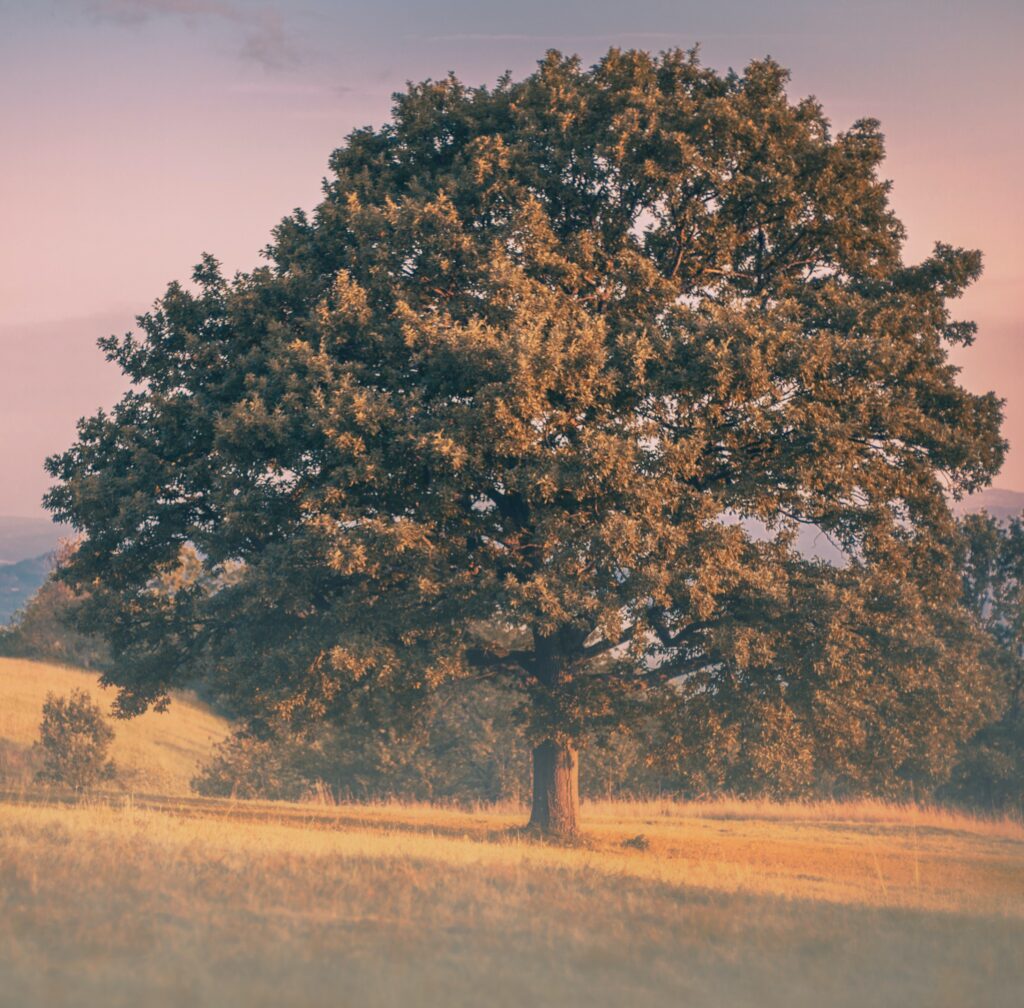
Once a backyard tree is mature—meaning that its root system is well developed—it will need water less often.
As you might expect, mature trees need a lot more water than new trees. It’s a common misconception that deep roots are the ones that absorb nutrients. In actuality, the “feeder” (fine, hair-like) tree roots are concentrated within the top few inches of the soil. They extend out to the tree’s canopy. This is the area you want to water.
There’s no set amount of water to provide, but a general rule of thumb is that you’ll want to wet the area to a depth of at least ten inches. You’ll want to water your tree slowly and deeply. Doing this will nourish the tree’s roots and protect it against future weather stressors.
Be sure to avoid frequent, shallow watering here; it’s best to check the moisture of the soil around the tree to see when extra water is needed. Here in Northern Virginia, DC, and Maryland, you may need to water 1-2 times per week in the middle of summer and weekly, as winter sets in.
NOTE: This trick can also be useful the first few times you water your tree, as it can help you gauge how much water your tree needs.
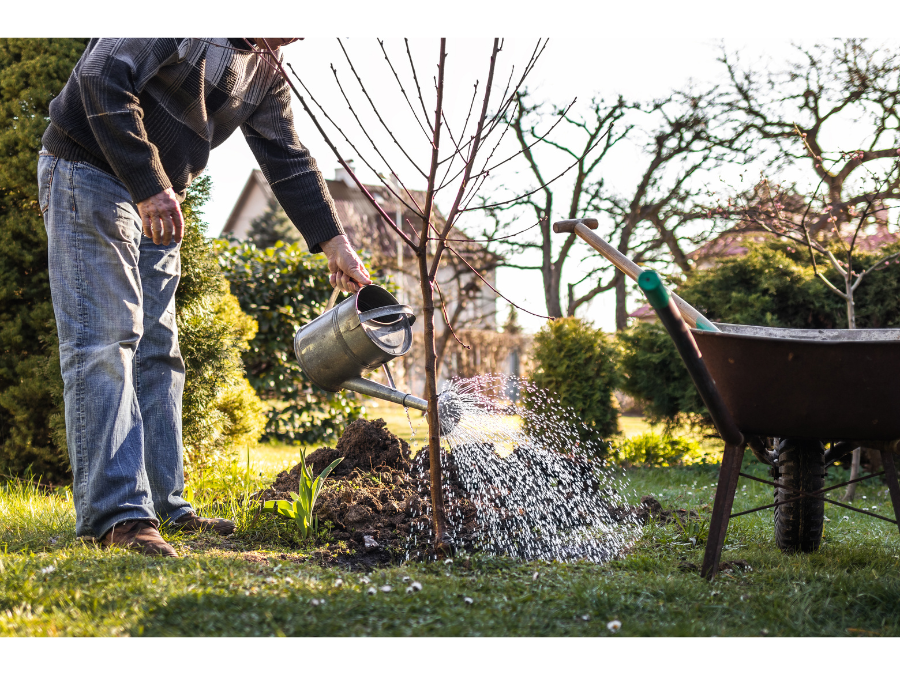
Our Top Tips for Watering Trees Just the Right Amount
Need some extra reassurance that you’re watering your trees correctly? Then try these helpful tricks to make sure you’re getting it just right!
Focus on the Critical Root Zone (CRZ)
The critical root zone is the best area to water a tree. You do not need to wet every inch of soil – it’s okay if there are some wet and dry spots. Avoid wetting foliage, as it is a waste of water and can promote the spread of diseases.
The Mudball Test
An easy way to tell if the soil is wet is to pick up the soil and see if you can make a mudball out of it. If you can, then the soil is wet, and the tree doesn’t need watering.
Leaf Discoloration
Another way to see if you’ve underwatered your tree, check the edges of its leaves and see if you can find any discoloration; if you do, your tree needs more water.
On the other hand, if your leaves are yellowing or of an unfamiliar color, you’ve likely overwatered your trees. Temporarily stop watering your tree for 1-2 weeks and try the screwdriver test again before resuming.
What is the screwdriver test?
The screwdriver test tells how moist the soil is around a plant. You can see how hard the ground is by inserting a stake or screwdriver into the dirt. If you can’t press it in, the soil is too dry and needs water.
>> Find out if your trees have been underwatered or overwatered
Take Better Care of Your Trees With RTEC
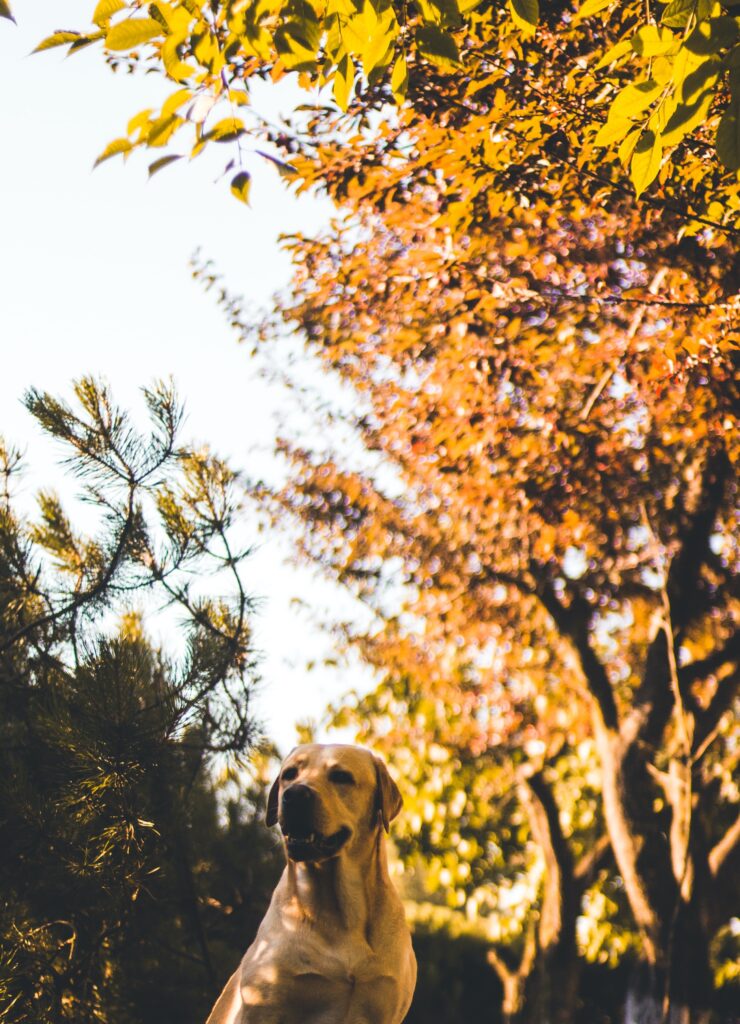
Although it may seem hard to understand when trees need moisture, these tips can help you understand when and how to water trees on your property. Over time, you’ll get a feel for the watering frequency your plant needs, provided that you pay close attention!
As tree geeks, most of us are no strangers to making the most of the great outdoors. So, if you’re worried your trees are showing signs of over- or underwatering, or if you can’t figure out how to tackle issues you’ve noticed with it, our team is always here to help. You can make an appointment online or call us at 703-573-3029 to meet with one of our Certified Arborists.
>> For other ways you can support your trees this spring, check out our Spring Tree Care Checklist
